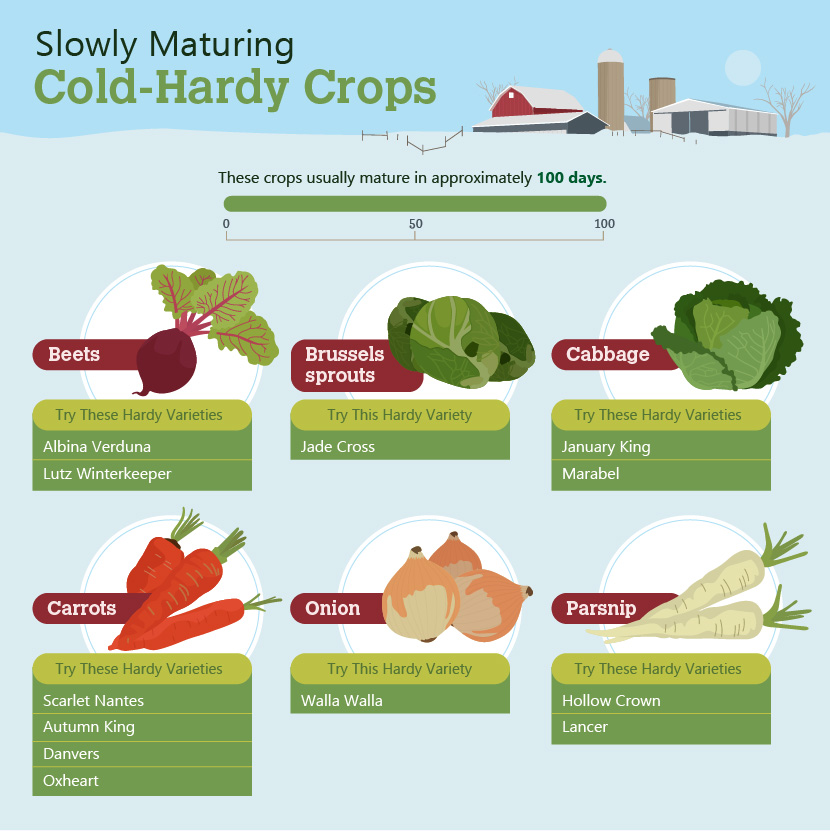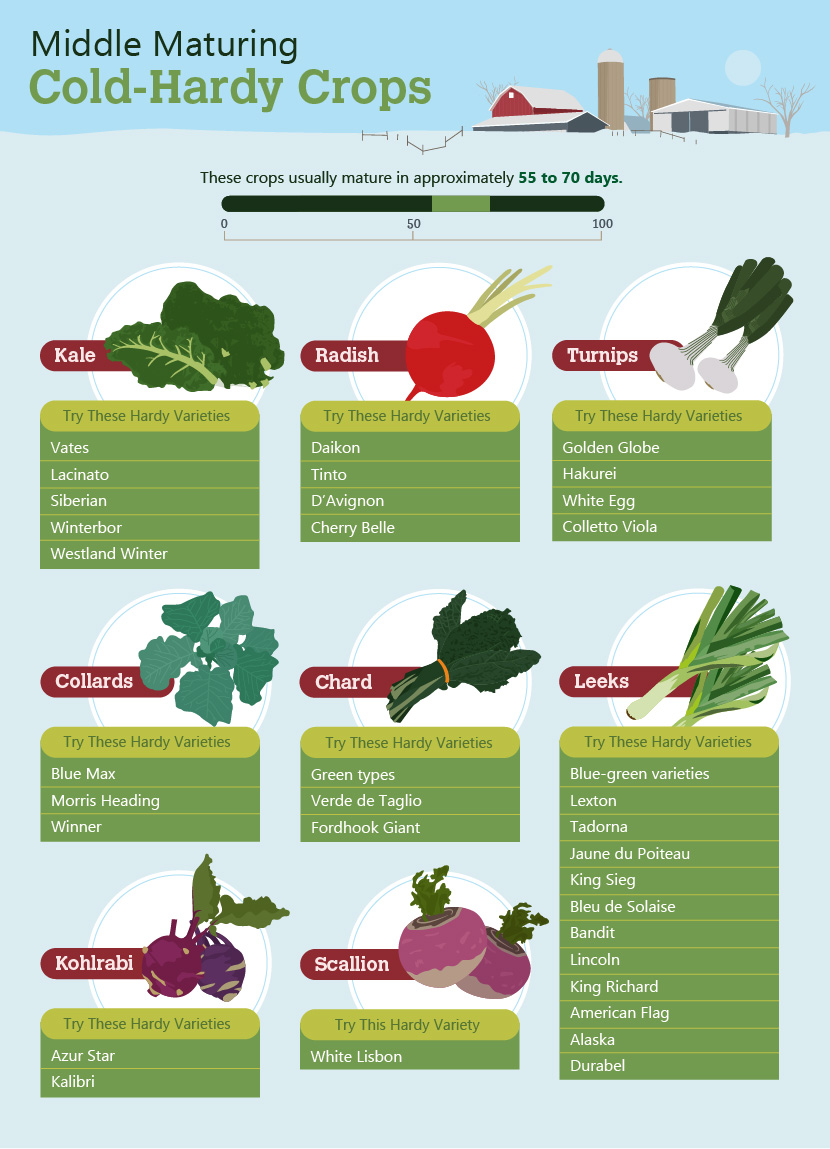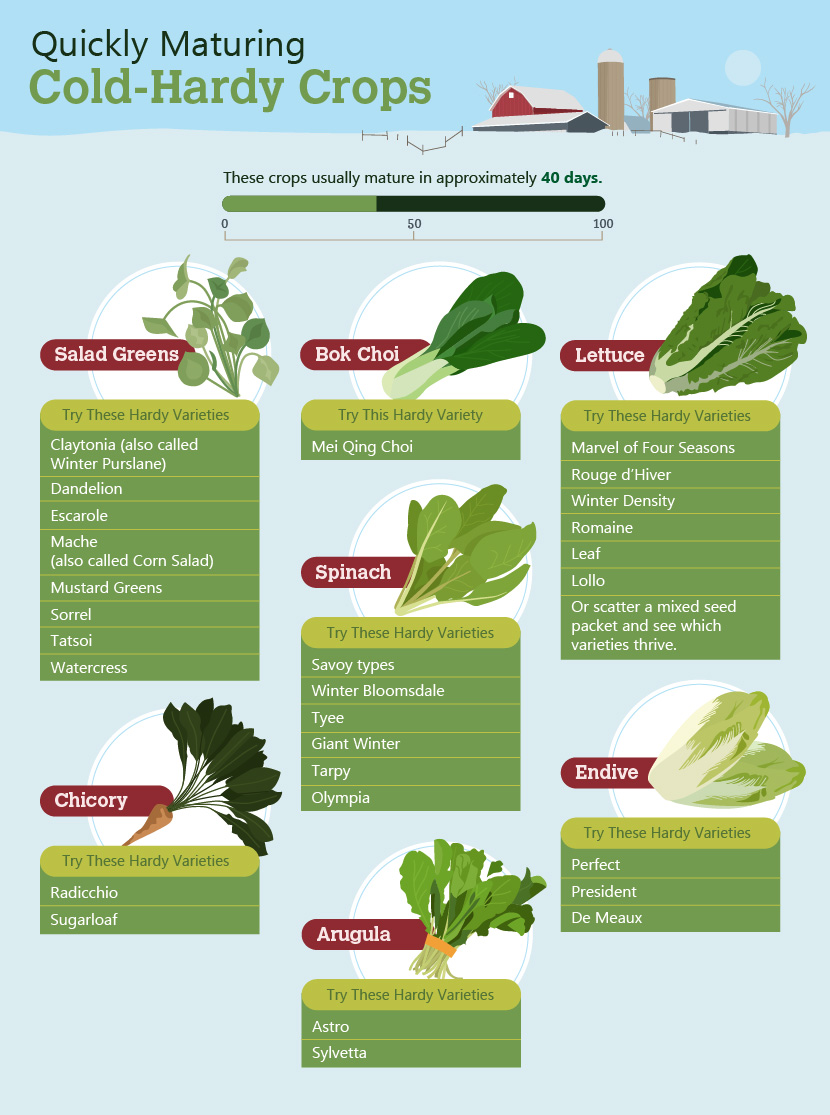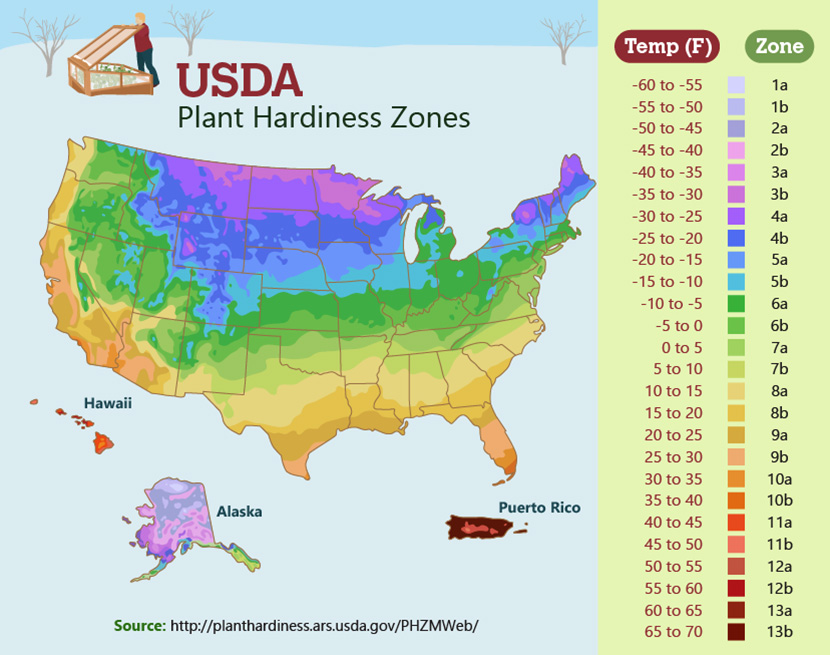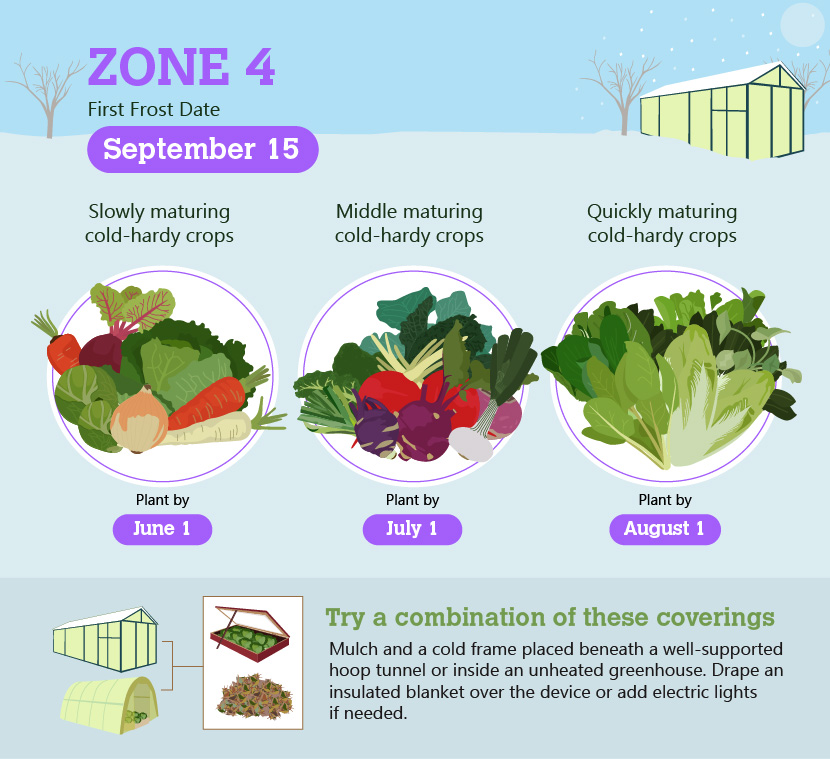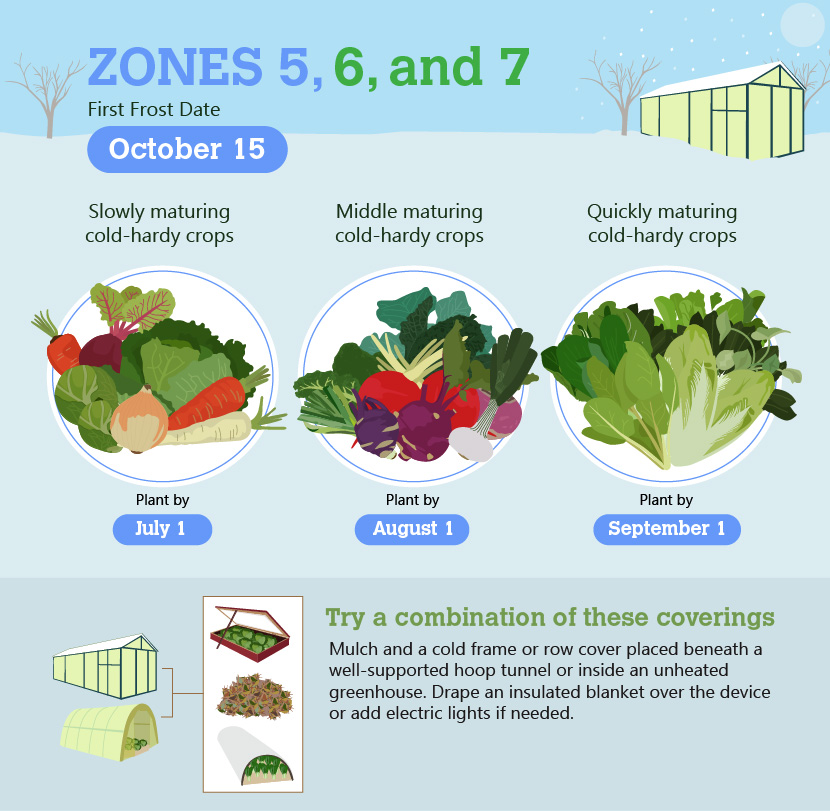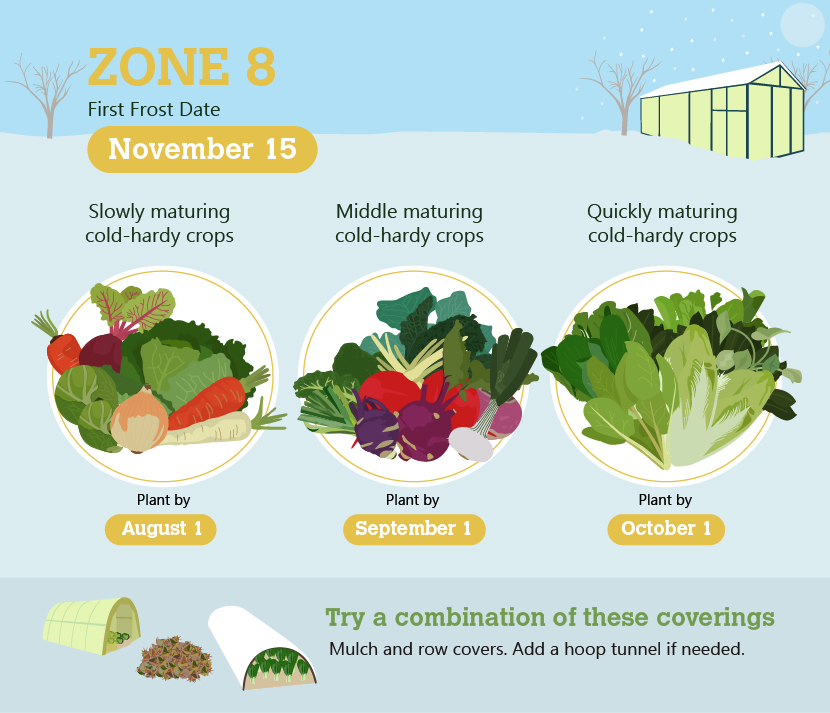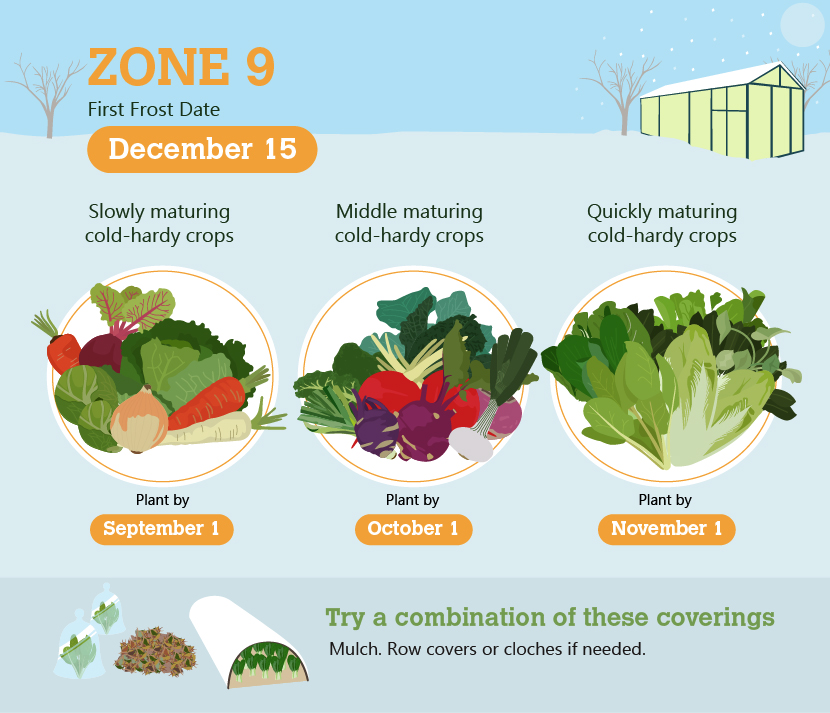Winter gardening is an uphill task that most gardeners dread.
However, wouldn’t it be a good idea if you could have a garden that grows all year round?
We all know that when winter bites, most crops are damaged extensively. Even those plants in their correct growing zone are not spared. Such harsh element reduces most crops hardiness exposing them to damage.
Good news, though:
It’s possible to have bountiful winter harvest nearly everywhere from zones 4, 5, 6, 7, 8, and 9.
If you come to think of it, it’s even better to plant fresh fruits and vegetables at this time of the year since most pests normally hibernate or migrate, weeds grow slower, and less water is lost through evaporation.
Think of it as a blessing in disguise.
So, with the right guidelines and the proper shelter equipment, your winter gardening experience will be so much fun and rewarding.
Thankfully, this article has all the tips and strategies you require to succeed. And as they say, a picture is worth a thousand words, these tips are presented in easy to understand infographics!
Sounds good?
Let’s begin:
3 Easy Winter Gardening Strategies
1. Plant Cold hardy crops
You don’t need to wait until high summer to get your garden going. In fact, many vegetables grow and taste better in the cooler temperatures of spring.
Certain ones, like lettuce and spinach, will bolt when the weather gets too hot and can only be grown in cool temperatures.
What you can plant in cold weather or winter
Slowly maturing (These crops usually mature in approximately 100 days.
- Beets (Try these hardy varieties – Albina Verduna & Lutz Winterkeeper
- Brussels sprouts (jade cross)
- Cabbage (January King and Marabel)
- Carrots (Scarlet Nantes, Autumn King, Danvers, & Oxheart)
- Onion (Walla Walla)
- Parsnip (Hollow Crown and Lancer)
Middle maturing (Matures between 55 to 70 days)
- Kale (Vates, Lacinato, Siberian, Winterbor, Westland Winter)
- Radish (Daikon, Tinto, D’Avignon, Cherry Belle)
- Turnips (Golden Globe, Hekurei, White Egg, Colletto Viola)
- Collards (Blue Max, Morris Heading, Winner)
- Chard (Green types, Vede de Taglio, Fordhook Giant)
- Leeks (Blue-green varieties, Lexton, Tadoma, Jaune du Poiteau, King Sieg, Bandit, Lincoln, American Flag, Alaska, Durabel)
- Kohlrabi (Azur Star, Kalibri)
- Scallion (White Lisbon)
Quickly Maturing (Matures within 40 days)
- Salad Greens (Claytonia, Dandelion, Escarole, Mache, Mustard Greens, Sorrel, Tatsoi, Watercress)
- Bok Choi (Mei Qing Choi)
- Lettuce (Marvel of Four Seasons, Rouge d’Hiver, Winter Density, Romaine, Leaf, Lollo) – Alternatively, scatter a mixed seed packet and observe which varieties thrive.
- Spinach (Savory types, Winter Bloomsdale, Tyee, Giant Winter, Tarpy, Olympia)
- Chicory (Radicchio, Sugarloaf)
- Arugula (Astro, Sylvetta)
- Endive (Perfect, President, De Meaux)
2. Protect your plants by using season Extenders
Unheated Greenhouse
Make use of an unheated greenhouse that absorbs heat from the sun and protect plants against harsh elements.
However, the secret is in choosing a greenhouse that is steady enough to withstand tough weather conditions such as frost or strong winds. You don’t want to constantly keep trying to duct tape it closed so that all of your plants won't die during the harsh weather.
You can purchase an inexpensive greenhouse, or if you’re a DIY freak like most gardeners I know, you can make one for yourself.
Make sure you open the windows or vents on sunny or warm days so that plants can get some ventilation.
Read: Hobby Gardening: The Best Hobby Greenhouse for Windy Area
Cold Frame
This could be an ordinary box with a clear top and no bottom. It can be made from an old window on wooden, metal, or straw-bale base.
You’ll require lots of ventilation.
To achieve this, prop the frame open on sunny or warm days.
Mulch
Use a two-to-three-inch layer of straw, leaves, or pine needles, which keeps plants’ base and roots warm and prevents evaporation. This is a self-ventilating process and therefore, you don’t have to worry about air circulation.
Garden Cloche
Is a small, transparent covering that protects a single plant from the elements. It could be a traditional bell-shaped glass cloche, or a recycled plastic milk jug cut in half. Remove cloches on sunny days.
Hoop tunnel
A heavy transluscent plastic or greenhouse fabric suspended on metal conduit or PVC hoops. Similarly, pen the ends or remove the covering on sunny or warm days.
Hot Bed
A Hot Bed is a cold frame with an extra heating device. Manure may let off sufficient heat, or electric lights (such as a string of Christmas lights) can be added. Open for ventilation o sunny or warm days.
Row Cover
This is a lightweight, semi-transparent fabric (often called Reemay and available on Amazon, garden stores, and other seed companies) that allows light, water, and air through but holds warmth and protects against wind. The fabric can float directly on plants with rocks on the edges to hold it down, or be suspended on wire or PVC hoops.
3. When it comes to winter gardening, timing is everything
Find your zone on the USDA’s Plant Hardiness Zone Map and scroll down for planting dates and considerations for your zone – if you’re already know your zone, feel free to skip this part.
The key to a thriving winter garden is to plant crops soon enough that they have time to mature before the first killing frost.
That’s why knowing the approximate maturity lengths for different cold-hardy plants comes in handy. Use the dates below as guidelines, pay attention to weather variations, and experiment to discover the planting schedule that works best for you.
Winter gardening zone 4
Like all other zones, Zone 4 has two subsets, 4a and 4b. These zone designations are guides for selecting plants that will survive the cold temperatures in these regions. There’s a 10°F difference between zones with zone 4 being colder than zone 5.
It experiences heavy snow and freezing temperatures that can dip as low as negative 35 degrees Fahrenheit.
Zone 4 is one of the shortest growing seasons of the USDA zones. The first and last frost dates can fluctuate a week or two, but as a general rule, frost dates are used for zones to plan garden planting.
Frost dates for Zone 4 last and first frosts for the year are typically:
Last frost date: May 15 to June 1 is usually the last frost range for Zone 4.
First frost date: September 15 to October 1 is usually the first frost range for Zone 4.
Winter gardening zone 5, 6, and 7
Zone 5 is associated with minimum average temperatures between -20 and -10 degrees F, this zone experiences a moderately cold winter. While the growing season is short, you can extend it by using cold frames or using started plants in your annual garden.
Zone 6 known as a generally mild climate, the average minimum winter temperature is between -10 to 0 degrees F.
Zone 7 features cool winters with average minimum temperatures falling between 0 to 10 degrees F. Gardens in this zone have multiple plant options from seed catalogues, local home stores, nurseries and greenhouses.
Winter gardening zone 8
Zone 8 is considered one of the warmest plant hardiness zones for a large portion of the southern United States.
Extending up the western coast, Zone 8 features average minimum winter temperatures of 10 to 20 degrees F. With hot summers and mild winters, growers typically enjoy a long planting season.
Many gardeners in Zone 8 grow vegetables three times a year, especially with the aid of cold frames and row covers.
Cool weather plants like spinach, lettuce and peas can be grown in both the spring and the fall. Even your summer vegetable harvest can be extended by planting every two weeks.
Winter gardening zone 9
Planting Zone 9 is considered a year-round planting zone. Located in California, Arizona, Texas, and Florida and along the Gulf of Mexico coast, this zone features warm winters and hot summers.
With an average minimum winter temperature of 20 to 30 degrees F, Zone 9 features active gardens throughout the entire year.
Instead of considering the cold hardiness, growers in Zone 9 actually need to consider the heat tolerance of certain plants.
Conclusion
It’s no secret that winter gardening is tricky and not for the faint heart gardener. But with adequate planning, preparation, and experimenting, you can have great success at it.
I’ve shared with you a comprehensive guide to winter gardening specific to your zone. In the infographic, you’ve learned about hardy-crop varieties, how you can protect them from harsh winter and various USDA plant hardiness zones.
The infographic is a step by step guide to help you implement the guidelines provided.
Now the ball is in your court.
Editor's Note: This post was originally published in January 2016 and has been revamped and updated for accuracy and comprehensiveness.

